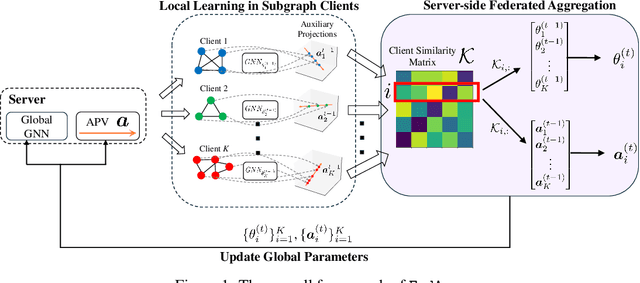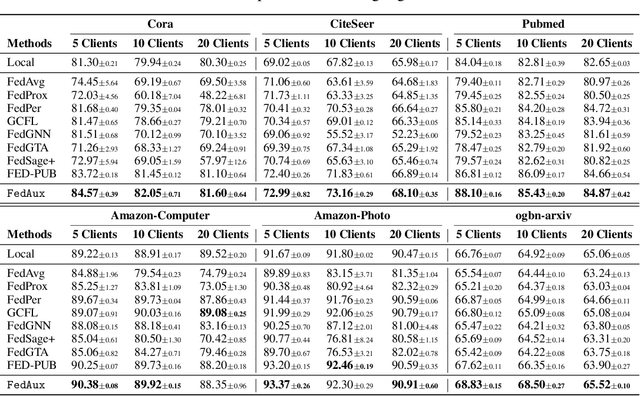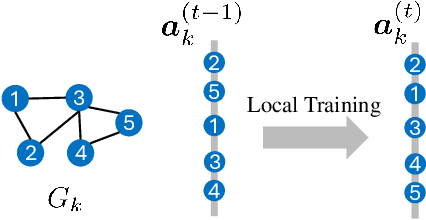Han Yu
LimiX: Unleashing Structured-Data Modeling Capability for Generalist Intelligence
Sep 03, 2025Abstract:We argue that progress toward general intelligence requires complementary foundation models grounded in language, the physical world, and structured data. This report presents LimiX, the first installment of our large structured-data models (LDMs). LimiX treats structured data as a joint distribution over variables and missingness, thus capable of addressing a wide range of tabular tasks through query-based conditional prediction via a single model. LimiX is pretrained using masked joint-distribution modeling with an episodic, context-conditional objective, where the model predicts for query subsets conditioned on dataset-specific contexts, supporting rapid, training-free adaptation at inference. We evaluate LimiX across 10 large structured-data benchmarks with broad regimes of sample size, feature dimensionality, class number, categorical-to-numerical feature ratio, missingness, and sample-to-feature ratios. With a single model and a unified interface, LimiX consistently surpasses strong baselines including gradient-boosting trees, deep tabular networks, recent tabular foundation models, and automated ensembles, as shown in Figure 1 and Figure 2. The superiority holds across a wide range of tasks, such as classification, regression, missing value imputation, and data generation, often by substantial margins, while avoiding task-specific architectures or bespoke training per task. All LimiX models are publicly accessible under Apache 2.0.
DAG-AFL:Directed Acyclic Graph-based Asynchronous Federated Learning
Jul 28, 2025Abstract:Due to the distributed nature of federated learning (FL), the vulnerability of the global model and the need for coordination among many client devices pose significant challenges. As a promising decentralized, scalable and secure solution, blockchain-based FL methods have attracted widespread attention in recent years. However, traditional consensus mechanisms designed for Proof of Work (PoW) similar to blockchain incur substantial resource consumption and compromise the efficiency of FL, particularly when participating devices are wireless and resource-limited. To address asynchronous client participation and data heterogeneity in FL, while limiting the additional resource overhead introduced by blockchain, we propose the Directed Acyclic Graph-based Asynchronous Federated Learning (DAG-AFL) framework. We develop a tip selection algorithm that considers temporal freshness, node reachability and model accuracy, with a DAG-based trusted verification strategy. Extensive experiments on 3 benchmarking datasets against eight state-of-the-art approaches demonstrate that DAG-AFL significantly improves training efficiency and model accuracy by 22.7% and 6.5% on average, respectively.
Balancing the Past and Present: A Coordinated Replay Framework for Federated Class-Incremental Learning
Jul 10, 2025Abstract:Federated Class Incremental Learning (FCIL) aims to collaboratively process continuously increasing incoming tasks across multiple clients. Among various approaches, data replay has become a promising solution, which can alleviate forgetting by reintroducing representative samples from previous tasks. However, their performance is typically limited by class imbalance, both within the replay buffer due to limited global awareness and between replayed and newly arrived classes. To address this issue, we propose a class wise balancing data replay method for FCIL (FedCBDR), which employs a global coordination mechanism for class-level memory construction and reweights the learning objective to alleviate the aforementioned imbalances. Specifically, FedCBDR has two key components: 1) the global-perspective data replay module reconstructs global representations of prior task in a privacy-preserving manner, which then guides a class-aware and importance-sensitive sampling strategy to achieve balanced replay; 2) Subsequently, to handle class imbalance across tasks, the task aware temperature scaling module adaptively adjusts the temperature of logits at both class and instance levels based on task dynamics, which reduces the model's overconfidence in majority classes while enhancing its sensitivity to minority classes. Experimental results verified that FedCBDR achieves balanced class-wise sampling under heterogeneous data distributions and improves generalization under task imbalance between earlier and recent tasks, yielding a 2%-15% Top-1 accuracy improvement over six state-of-the-art methods.
Personalized Subgraph Federated Learning with Differentiable Auxiliary Projections
May 29, 2025



Abstract:Federated learning (FL) on graph-structured data typically faces non-IID challenges, particularly in scenarios where each client holds a distinct subgraph sampled from a global graph. In this paper, we introduce Federated learning with Auxiliary projections (FedAux), a personalized subgraph FL framework that learns to align, compare, and aggregate heterogeneously distributed local models without sharing raw data or node embeddings. In FedAux, each client jointly trains (i) a local GNN and (ii) a learnable auxiliary projection vector (APV) that differentiably projects node embeddings onto a 1D space. A soft-sorting operation followed by a lightweight 1D convolution refines these embeddings in the ordered space, enabling the APV to effectively capture client-specific information. After local training, these APVs serve as compact signatures that the server uses to compute inter-client similarities and perform similarity-weighted parameter mixing, yielding personalized models while preserving cross-client knowledge transfer. Moreover, we provide rigorous theoretical analysis to establish the convergence and rationality of our design. Empirical evaluations across diverse graph benchmarks demonstrate that FedAux substantially outperforms existing baselines in both accuracy and personalization performance.
Voronoi-grid-based Pareto Front Learning and Its Application to Collaborative Federated Learning
May 27, 2025Abstract:Multi-objective optimization (MOO) exists extensively in machine learning, and aims to find a set of Pareto-optimal solutions, called the Pareto front, e.g., it is fundamental for multiple avenues of research in federated learning (FL). Pareto-Front Learning (PFL) is a powerful method implemented using Hypernetworks (PHNs) to approximate the Pareto front. This method enables the acquisition of a mapping function from a given preference vector to the solutions on the Pareto front. However, most existing PFL approaches still face two challenges: (a) sampling rays in high-dimensional spaces; (b) failing to cover the entire Pareto Front which has a convex shape. Here, we introduce a novel PFL framework, called as PHN-HVVS, which decomposes the design space into Voronoi grids and deploys a genetic algorithm (GA) for Voronoi grid partitioning within high-dimensional space. We put forward a new loss function, which effectively contributes to more extensive coverage of the resultant Pareto front and maximizes the HV Indicator. Experimental results on multiple MOO machine learning tasks demonstrate that PHN-HVVS outperforms the baselines significantly in generating Pareto front. Also, we illustrate that PHN-HVVS advances the methodologies of several recent problems in the FL field. The code is available at https://github.com/buptcmm/phnhvvs}{https://github.com/buptcmm/phnhvvs.
Federated Deconfounding and Debiasing Learning for Out-of-Distribution Generalization
May 08, 2025Abstract:Attribute bias in federated learning (FL) typically leads local models to optimize inconsistently due to the learning of non-causal associations, resulting degraded performance. Existing methods either use data augmentation for increasing sample diversity or knowledge distillation for learning invariant representations to address this problem. However, they lack a comprehensive analysis of the inference paths, and the interference from confounding factors limits their performance. To address these limitations, we propose the \underline{Fed}erated \underline{D}econfounding and \underline{D}ebiasing \underline{L}earning (FedDDL) method. It constructs a structured causal graph to analyze the model inference process, and performs backdoor adjustment to eliminate confounding paths. Specifically, we design an intra-client deconfounding learning module for computer vision tasks to decouple background and objects, generating counterfactual samples that establish a connection between the background and any label, which stops the model from using the background to infer the label. Moreover, we design an inter-client debiasing learning module to construct causal prototypes to reduce the proportion of the background in prototype components. Notably, it bridges the gap between heterogeneous representations via causal prototypical regularization. Extensive experiments on 2 benchmarking datasets demonstrate that \methodname{} significantly enhances the model capability to focus on main objects in unseen data, leading to 4.5\% higher Top-1 Accuracy on average over 9 state-of-the-art existing methods.
Efficient Shapley Value-based Non-Uniform Pruning of Large Language Models
May 03, 2025Abstract:Pruning large language models (LLMs) is a promising solution for reducing model sizes and computational complexity while preserving performance. Traditional layer-wise pruning methods often adopt a uniform sparsity approach across all layers, which leads to suboptimal performance due to the varying significance of individual transformer layers within the model not being accounted for. To this end, we propose the \underline{S}hapley \underline{V}alue-based \underline{N}on-\underline{U}niform \underline{P}runing (\methodname{}) method for LLMs. This approach quantifies the contribution of each transformer layer to the overall model performance, enabling the assignment of tailored pruning budgets to different layers to retain critical parameters. To further improve efficiency, we design the Sliding Window-based Shapley Value approximation method. It substantially reduces computational overhead compared to exact SV calculation methods. Extensive experiments on various LLMs including LLaMA-v1, LLaMA-v2 and OPT demonstrate the effectiveness of the proposed approach. The results reveal that non-uniform pruning significantly enhances the performance of pruned models. Notably, \methodname{} achieves a reduction in perplexity (PPL) of 18.01\% and 19.55\% on LLaMA-7B and LLaMA-13B, respectively, compared to SparseGPT at 70\% sparsity.
Establishing Reliability Metrics for Reward Models in Large Language Models
Apr 21, 2025Abstract:The reward model (RM) that represents human preferences plays a crucial role in optimizing the outputs of large language models (LLMs), e.g., through reinforcement learning from human feedback (RLHF) or rejection sampling. However, a long challenge for RM is its uncertain reliability, i.e., LLM outputs with higher rewards may not align with actual human preferences. Currently, there is a lack of a convincing metric to quantify the reliability of RMs. To bridge this gap, we propose the \textit{\underline{R}eliable at \underline{$\eta$}} (RETA) metric, which directly measures the reliability of an RM by evaluating the average quality (scored by an oracle) of the top $\eta$ quantile responses assessed by an RM. On top of RETA, we present an integrated benchmarking pipeline that allows anyone to evaluate their own RM without incurring additional Oracle labeling costs. Extensive experimental studies demonstrate the superior stability of RETA metric, providing solid evaluations of the reliability of various publicly available and proprietary RMs. When dealing with an unreliable RM, we can use the RETA metric to identify the optimal quantile from which to select the responses.
Local Data Quantity-Aware Weighted Averaging for Federated Learning with Dishonest Clients
Apr 17, 2025Abstract:Federated learning (FL) enables collaborative training of deep learning models without requiring data to leave local clients, thereby preserving client privacy. The aggregation process on the server plays a critical role in the performance of the resulting FL model. The most commonly used aggregation method is weighted averaging based on the amount of data from each client, which is thought to reflect each client's contribution. However, this method is prone to model bias, as dishonest clients might report inaccurate training data volumes to the server, which is hard to verify. To address this issue, we propose a novel secure \underline{Fed}erated \underline{D}ata q\underline{u}antity-\underline{a}ware weighted averaging method (FedDua). It enables FL servers to accurately predict the amount of training data from each client based on their local model gradients uploaded. Furthermore, it can be seamlessly integrated into any FL algorithms that involve server-side model aggregation. Extensive experiments on three benchmarking datasets demonstrate that FedDua improves the global model performance by an average of 3.17% compared to four popular FL aggregation methods in the presence of inaccurate client data volume declarations.
Understanding the Generalization of In-Context Learning in Transformers: An Empirical Study
Mar 19, 2025Abstract:Large language models (LLMs) like GPT-4 and LLaMA-3 utilize the powerful in-context learning (ICL) capability of Transformer architecture to learn on the fly from limited examples. While ICL underpins many LLM applications, its full potential remains hindered by a limited understanding of its generalization boundaries and vulnerabilities. We present a systematic investigation of transformers' generalization capability with ICL relative to training data coverage by defining a task-centric framework along three dimensions: inter-problem, intra-problem, and intra-task generalization. Through extensive simulation and real-world experiments, encompassing tasks such as function fitting, API calling, and translation, we find that transformers lack inter-problem generalization with ICL, but excel in intra-task and intra-problem generalization. When the training data includes a greater variety of mixed tasks, it significantly enhances the generalization ability of ICL on unseen tasks and even on known simple tasks. This guides us in designing training data to maximize the diversity of tasks covered and to combine different tasks whenever possible, rather than solely focusing on the target task for testing.
 Add to Chrome
Add to Chrome Add to Firefox
Add to Firefox Add to Edge
Add to Edge